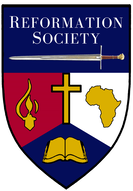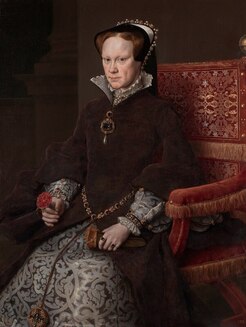 Queen Mary is remembered as the ruler who failed to return England to the Catholic Church. As Foxe’s of Martyrs (Acts and Monuments) recorded, not the hundreds of prominent executions carried out under Blood Mary, nor the cruelties, torment, torture and oppression were sufficient to crush the Protestant Reformation in England. In fact, the end result of Mary’s attempts to return England to Catholicism were rather to convince the vast majority of Englishmen in their resolution and determination never to again succumb to such tyranny, superstition, intolerance or error ever again. By trying to exterminate the Reformation, Bloody Mary only succeeded in entrenching it. 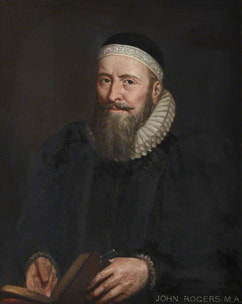 John Rogers As Bible translator, prominent Protestant preacher and Reformer, John Rogers was lead to the stake in January 1555, he was asked once more to recant. Rogers replied that what he had preached from the pulpits he would seal now with his blood. “Then thou art a heretic!” exclaimed the Sheriff. “That shall be known on the Day of Judgment,” replied Rogers. “Well, I will never pray for you,” said the Sheriff. “I will pray for you,” responded Rogers. As he walked to the stake, Rogers sang Psalms. He was met by his wife and 11 children, one an infant in her arms. As John Foxe observed: “This sad sight did not move him, but he cheerfully and patiently went on his way to Smithfield, where he was burned to ashes in the presence of a great number of people.” Rogers was the first of hundreds of prominent Protestant leaders executed during the reign of Bloody Mary. But instead of the crowds being intimidated into submission to the crown and Catholic Church, these burnings seemed to fuel their discontent and swell the ranks of the Protestants. Instead of the condemned Reformers being humbled and discredited by recanting and submitting to the demands of the Inquisition, the Protestants all died with tremendous courage, and resolution, using the stake as their final pulpit. As Rogers declared: “Sealing my testimony with my blood.” The unintended consequences of Mary’s persecutions were to inspire more sympathy for the Protestants, and aversion to their Catholic persecutors. 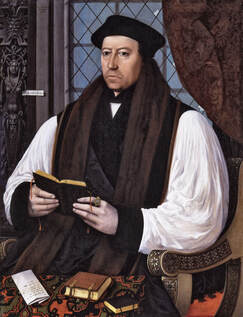 Thomas Cranmer Even Thomas Cranmer, the most loyal of subjects, was driven to defy the Queen. Distraught that his faith had been considered treasonable, the fallen Archbishop recanted, and then fearing the fires of hell more than the wrath of the Queen, he withdrew his recantation and died a martyr – steadfast and resolute. As it has been pointed out, by making a hero even out of this unheroic man, the Queen and Cardinal demonstrated how counter-productive persecution could become. Spanish Inquisition By way of contrast, in Spain, the Inquisition, the shame of public humiliation, and the fear of a torturous death by burning, drove many accused to confess and submit. In February 1486, for example, 750 recanters were welcomed back to the Catholic faith in the Toledo Cathedral, amidst cheering crowds. But such demonstrations never took place in England. 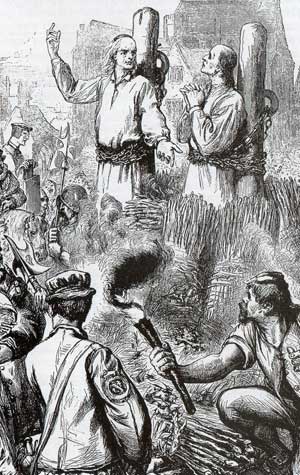 Bishops Ridley and Latimer In England, spectators generally sympathized with the victims, admired their courage, and often embraced their faith. As Bishop Ridley was threatened with the stake, unless he recantered, Ridley responded: “Well, so long as the breath is in my body, I will never deny my Lord Christ and His known truth. God’s Will be done in me.” As the piles of wood and sticks around them was lighted, Bishop Latimer said: “Be of good comfort, Master Ridley and play the man! We shall this day light such a candle, by God’s grace, in England, as I trust shall never put out.” Indeed, Bloody Mary and her persecutors succeeded only in alienating the people of England from Roman Catholism, and entrenching the Reformation. “On this rock I will build My Church and the gates of hell shall not prevail against it.” Matthew 16:18 When Mary was crowned Queen of England, the Emperor of the Holy Roman Empire, Charles V proposed that she marry his heir, Prince Philip of Spain, and accept, together with the Prince, £60,000 a year. For Mary to marry the heir to the Emperor opened the way to her becoming an Empress and sharing the greatest position in Europe. However, it would also end the independence of England, bringing it under foreign rule. 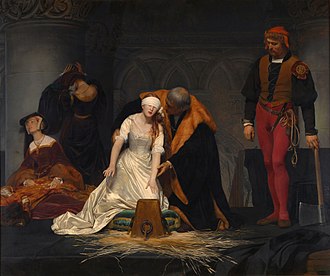 Lady Jane Grey Mary had her cousin, the Protestant Lady Jane Grey (16-years old) and her 17-year old husband, along with about 100 of their followers, beheaded. This removed the immediate challenge to the throne. The Clear and Present Danger in Spain In July 1554, Prince Philip of Spain arrived abroad an elaborate galley accompanied by a fleet of 125 ships. His entourage included 20 of Spain’s top nobility, along with their wives and servants and a bodyguard numbering several hundred soldiers. Twenty carts carrying 96 chests loaded with £3 million in gold duckets accompanied him. Mary was herself half Spanish, and now marrying a Spanish king with his lavish Spanish court surrounding him, it became apparent to many Englishmen that the throne of England had been hijacked by Spain. Mary then called for Cardinal Reginald Pole to come to England and assist her in turning the nation back to Catholicism. (In one election, Pole had failed to become Pope by only two votes). Mary instructed Parliament to formerly return England to Catholicism. In response, Pole granted the nation “absolution” in St. Paul’s Cathedral. Medieval statutes providing for “heretics” to be tried in church courts, and handed over to civil authorities for execution, were restored. All Protestant laws were abolished by a second Statute of Repeal. 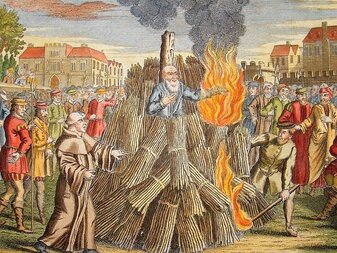 Bishops Hooper, Ridley, Latimer and Cranmer John Hooper, former Bishop of Worcester was jailed for having married, and for refusing to put his wife aside. Four of the most prominent Protestant Bishops – Hooper, Ridley, Latimer and Cranmer were burned at the stake, followed by hundreds of other “heretics.” Resistance to Rome Deepens Horror, anger and resentment grew throughout England. Sincerely held religious convictions cannot be changed by decree. The books of Luther, Calvin and other Reformers had already circulated throughout England. Protestant refugees fled to Germany and Switzerland. A stream of pamphlets against Catholicism were smuggled back into England. Small house fellowships, Bible study groups and prayer meetings met in cellars, cemeteries and private homes. Thousands of English Protestants found refuge in Geneva, Frankfurt and Strasbourg. Resistance to “Bloody Mary” and her campaign to convert England to Catholicism deepened and grew. Work on the Geneva Bible began. As more and more burnings of Protestant leaders were ordered, riots erupted. The unpopular Spanish Prince Philip, disenchanted with the obviously infertile Queen Mary and the open resentment of the English to his Spanish court, departed for Europe. Frustration and Failure Mary, humiliated by the failure of her marriage, inability to bear a child, and the obvious failure of her campaign to return England to Catholicism unleashed her bitterness upon a rebellious England. Death Wish Mary’s father-in-law, Charles V, gave Queen Mary the advice that it had required him to send 30,000 Protestants to terrible deaths to suppress “the heresy of Lutheranism” from spreading on the continent, and she would have to do the same in England! 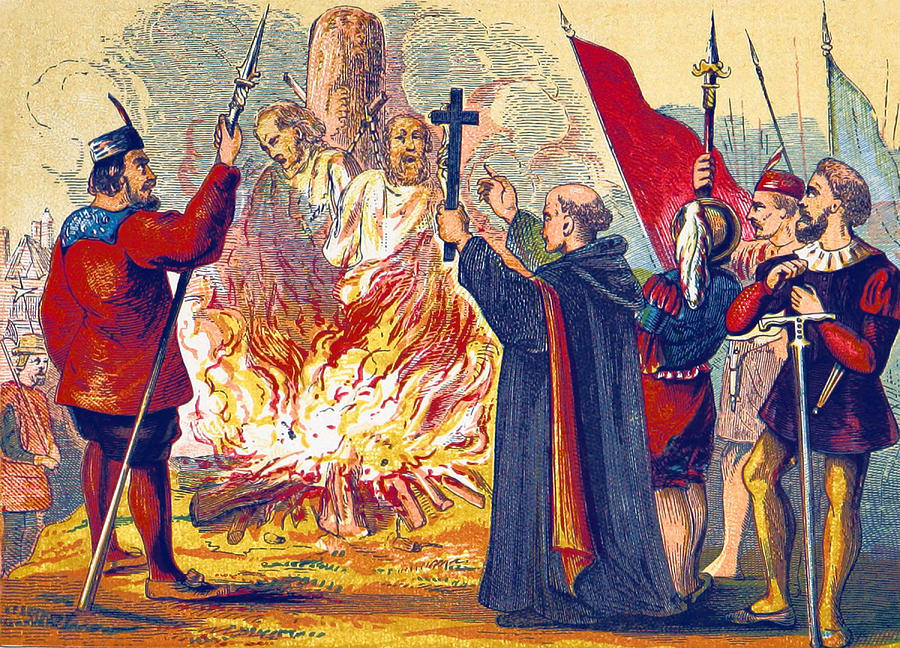 The Counter Productive Counter Reformation 65-year old, Bishop of London, Ridley, and 80-year old Bishop Latimer of Worcester were sent to the stake. The sight of these gray haired patriarchs singing Psalms in the flames “until his lips were burned away” shocked all of England. A 60-year old widow was similarly burnt to death. Then a young blind woman, a rope maker’s daughter, was sentenced to death by bishops she could not see. With every burning, resistance to Catholicism deepened and commitment to the Reformation doctrines spread. Mary’s Counter Reformation was counterproductive. In early 1556, Charles V abdicated and handed the crowns of Castile, Aragon, Sicily, and the West Indies over to Philip II. His brother, Ferdinand became the Emperor of Germany. At this time, King Philip II was at war with France and facing widespread revolt in the Netherlands, so he sought to restore his relationship with his wife, Queen Mary of England. If she would send English troops and Calvary to the Netherlands, he would return to her. So, English foot and horse soldiers were dispatched to the Netherlands for Philip’s use in suppressing the Dutch Protestants. Next, Philip wanted England to declare war on France. Mary insisted on Philip’s return first. Philip returned 18 March 1557, and found that Mary had become a gaunt, aged woman whose hold on the throne was tenuous. From her side, Mary also found Philip greatly changed, aged before his time. Her hopes of restoring Catholicism to England rested on having a Catholic heir, which her barrenness made impossible. Philip openly brought his current mistress (his cousin, the Duchess of Lorraine) with him to England. Mary’s humiliation was complete. Her personal popularity had vanished in the flames of her vicious persecutions, her increasing of taxes had brought her English subjects to the point of rebellion. Mary threatened and cajoled her Council to declare war on France. Once this was secured, Philip left, 6 July 1557. He never returned to England. Mary ended her days in great agony, in fever and mentally deranged. As “Bloody Mary” lay dying in England, Charles V was also suffering, in excruciating pain, feverish and in fear, full of regrets. Charles V, the Emperor who Luther had defied, died 21 September 1558. Bloody Mary followed him into eternity on 17 November 1558. Twelve hours later, her Archbishop of Canterbury, Cardinal Pole, died of a similar fever in Lambeth Palace. 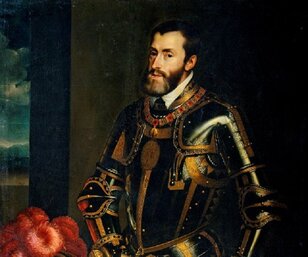 Defeat and Retreat 1559 began with the Catholic cause in defeat and retreat. Emperor Charles V had died in Spain. His sister, Mary, the former regent of the Netherlands also died. Mary of Lorraine, the regent of Scotland, was out of power and on the run, with the Protestants in hot pursuit.“Bloody Mary” and her determined attempt to return England to the papacy was shattered. Protestant Elizabeth Tudor was crowned in her stead, Queen of England on 15 January 1559. John Knox returned from exile to Edinburgh on 2 May 1559. The Reformation had triumphed in Britain. 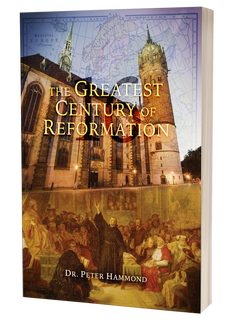 Dr. Peter Hammond The Reformation Society Web: www.reformationsa.org See his book The Greatest Century of Reformation (288 pages, over 200 historic pictures and maps, 20 chapters and 16 appendices) from Christian Liberty Books, PO Box 358, Howard Place 7450, Cape Town, South Africa, Tel: 021-689-7478, Fax: 086-551-7490, Email: [email protected] and Website: www.christianlibertybooks.co.za.
2 Comments
Cynthia Ruble
10/16/2022 12:42:32 pm
Really appreciated this article.
Reply
Leave a Reply. |
History ArticlesCategories
All
Archives
May 2023
|
- Home
-
History Articles
- History Articles
- All Categories
- Character Studies
- Greatest Century of Missions
- Greatest Century of Reformation
- Reformation In Bohemia
- Reformation In England
- Reformation In France
- Reformation In Geneva
- Reformation In Germany
- Reformation In Italy
- Reformation In Scotland
- Reformation in Switzerland
- Victorious Christians
- Contemporary Articles
- Resources
- Contact
- Donate
|
The Reformation Society
PO Box 74, Newlands, 7725, South Africa Tel : (021) 689-4480 Email: [email protected] Copyright © 2022 ReformationSA.org. All rights reserved |
- Home
-
History Articles
- History Articles
- All Categories
- Character Studies
- Greatest Century of Missions
- Greatest Century of Reformation
- Reformation In Bohemia
- Reformation In England
- Reformation In France
- Reformation In Geneva
- Reformation In Germany
- Reformation In Italy
- Reformation In Scotland
- Reformation in Switzerland
- Victorious Christians
- Contemporary Articles
- Resources
- Contact
- Donate
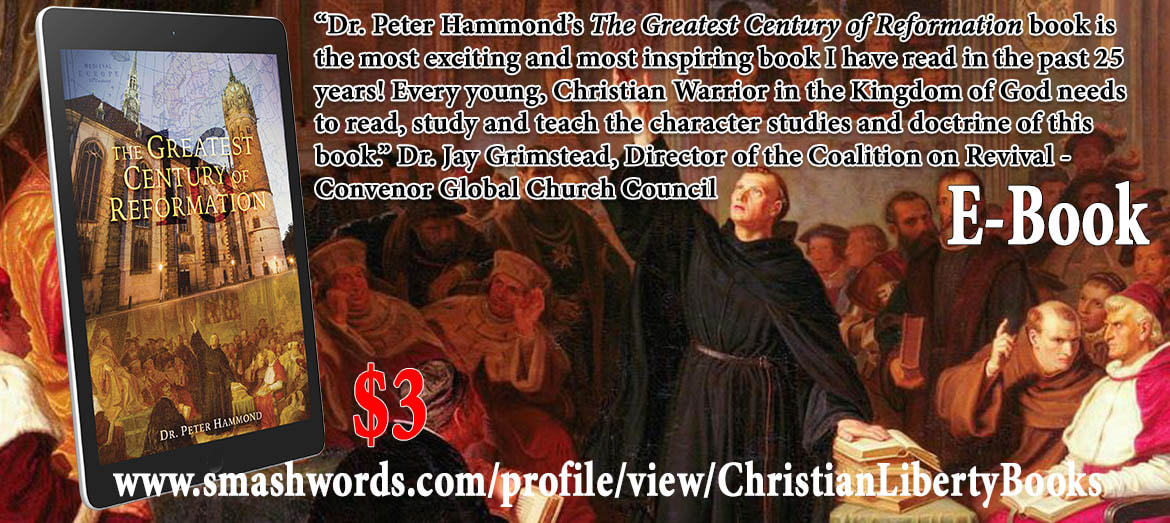
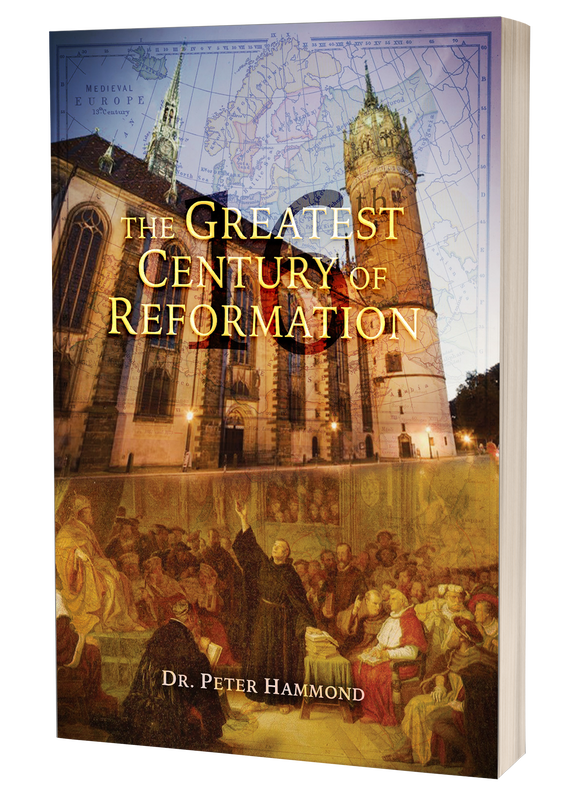
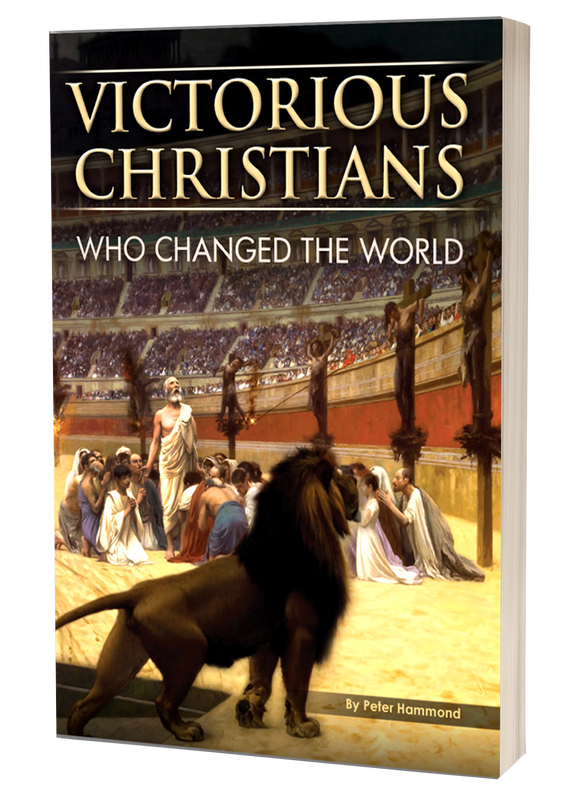
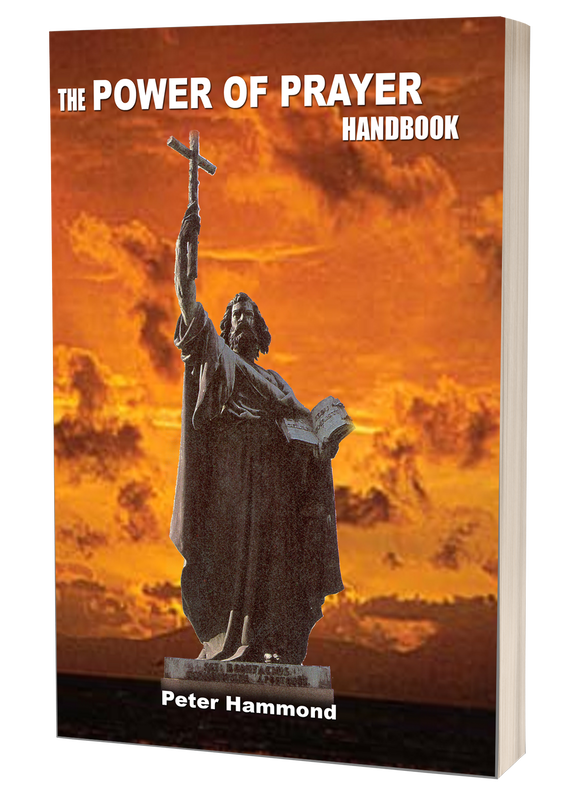
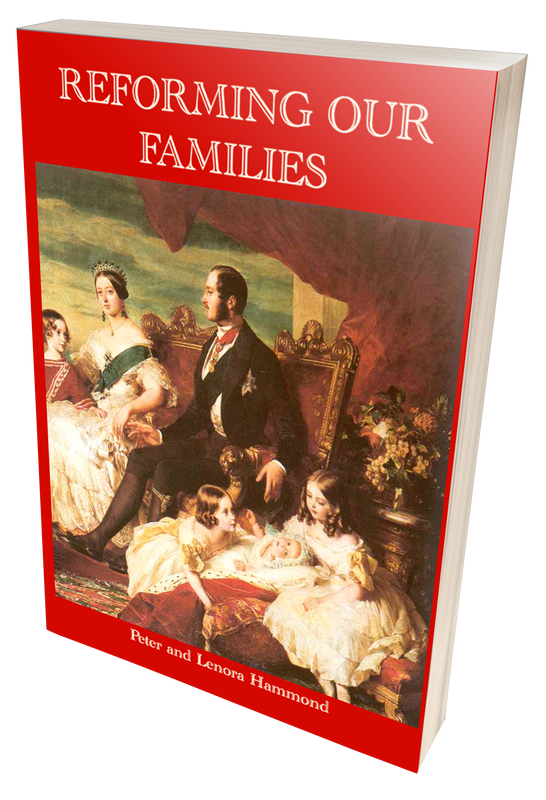
 RSS Feed
RSS Feed
